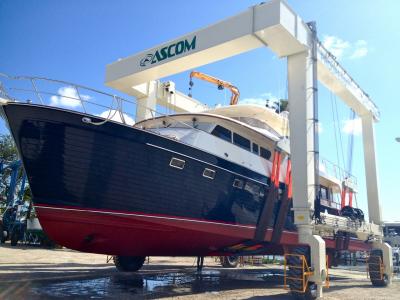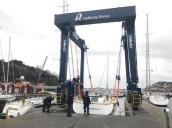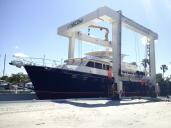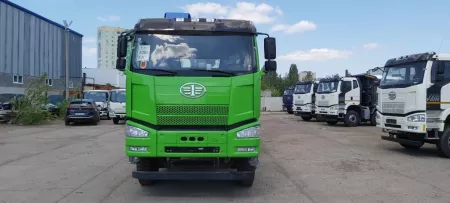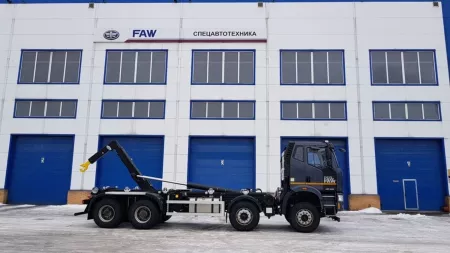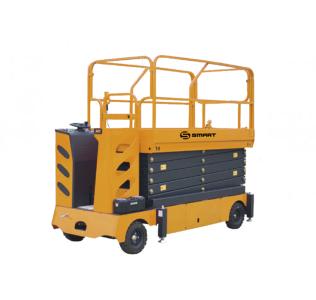BHT self-propelled lifts with a lifting capacity of 25-140 tons
Category:
Special machinery manufacturer:
Model:
Condition:
Not specified
Availability:
Not specified
#30734
Specifications
Specifications:
4 wheels
width and height according to customer's size
hydrostatic transmission with proportional control
independent/synchronized operation of winches
steering on all wheels (hydraulic system)
stationary and/or movable lifting points
electronic weighing system
maximum load limiter
remote radio
control set of safety devices
color of painting according to customer's choice
anti-corrosion protection
BHT self-propelled lifts are used for lifting yachts, boats, and ships with a dock weight of up to 140 tons in yacht clubs, marinas, yacht parks, ship repair facilities, etc. The standard range of models includes cranes with the following lifting capacity: 25/30, 45, 60, 75, 85, 100/110 and 140 tons. With a double designation, the first number indicates the lifting capacity of the crane of increased width, the second – the standard width. The dimensions, lifting capacity and configuration of cranes can be changed depending on the customer's requirements and the conditions of the tasks performed – the width of the vessels being lifted and the available docks, the size of gates, passageways, etc.
Such lifts are a spatial frame moving on 4 wheels with pneumatic tires. The lift frame does not have a bridge in the front part, which allows lifting vessels with developed superstructures. The engine compartment is located at the bottom of the longitudinal beam of the frame, and 4 lifting winches are installed on top. The winches are capable of both synchronous and independent operation, and are equipped with electronic lifting speed control. The models of this series have 4 lifting points as standard, two of which are stationary, and two can be moved using hydraulics to allow lifting vessels of various lengths. Polyester slings are attached to the lifting points, on which the vessel being lifted is located. The lift can have 1 or 2 (with or without load) lifting speed.
The lift's engine is diesel, liquid-cooled, usually IVECO-FPT, with a capacity of 45-150 kW. The engine's emission rate is TIER III. The drive of all units is hydraulic, with proportional control.
The lift is moved using hydraulic gear motors built into the wheel hubs. The drive is carried out on 2 wheels, as an option, a drive for all 4 wheels is available. The lift can have 1, or, as an option, 2 (with or without load) the speed of movement. The maximum climb in the standard version is 4%. On request, it can be increased to 8% by equipping all–wheel drive and installing a more powerful engine. To compensate for surface irregularities, a hinge can be integrated into the frame, which avoids critical stresses in the structures.
All lifts, except the BHT25/30 and BHT45 models, have self-correcting steering of all wheels using hydraulic cylinders. An electronic steering system is available as an option, which significantly improves maneuverability and allows you to perform the following maneuvers: turning the front /rear/all wheels, turning all wheels 90°, crab stroke 45 °, carousel stroke.
The crane is controlled by a remote radio control system, which allows the operator to monitor the entire work area. As an addition, there is an emergency wired control panel. The lift can also be operated using levers located directly on the hydraulic distributor. The lift has an automatic overload system that disables all actions when exceeding the set values, as well as a weighing system that allows you to control the weight of the vessel being lifted and its distribution over the winches. The remote diagnostic system, as standard, allows the manufacturer's technical department to diagnose the machine and identify malfunctions online.
For the operation of the lift, a special dock is required, which is a cutout in the mooring wall forming a pool, or an overpass onto which the lift enters to lift the vessel. The slings are lowered into the water with the help of winches, the vessel, according to the lifting scheme, is located above the slings, and rises smoothly out of the water. Next, the lifter leaves the dock and moves the vessel to the required location, where it installs it on special stands or keel blocks, or reloads it onto a self-propelled trailer for further transportation.
This technology is the simplest, fastest and safest way to lift vessels with a displacement of up to 140 tons.
4 wheels
width and height according to customer's size
hydrostatic transmission with proportional control
independent/synchronized operation of winches
steering on all wheels (hydraulic system)
stationary and/or movable lifting points
electronic weighing system
maximum load limiter
remote radio
control set of safety devices
color of painting according to customer's choice
anti-corrosion protection
BHT self-propelled lifts are used for lifting yachts, boats, and ships with a dock weight of up to 140 tons in yacht clubs, marinas, yacht parks, ship repair facilities, etc. The standard range of models includes cranes with the following lifting capacity: 25/30, 45, 60, 75, 85, 100/110 and 140 tons. With a double designation, the first number indicates the lifting capacity of the crane of increased width, the second – the standard width. The dimensions, lifting capacity and configuration of cranes can be changed depending on the customer's requirements and the conditions of the tasks performed – the width of the vessels being lifted and the available docks, the size of gates, passageways, etc.
Such lifts are a spatial frame moving on 4 wheels with pneumatic tires. The lift frame does not have a bridge in the front part, which allows lifting vessels with developed superstructures. The engine compartment is located at the bottom of the longitudinal beam of the frame, and 4 lifting winches are installed on top. The winches are capable of both synchronous and independent operation, and are equipped with electronic lifting speed control. The models of this series have 4 lifting points as standard, two of which are stationary, and two can be moved using hydraulics to allow lifting vessels of various lengths. Polyester slings are attached to the lifting points, on which the vessel being lifted is located. The lift can have 1 or 2 (with or without load) lifting speed.
The lift's engine is diesel, liquid-cooled, usually IVECO-FPT, with a capacity of 45-150 kW. The engine's emission rate is TIER III. The drive of all units is hydraulic, with proportional control.
The lift is moved using hydraulic gear motors built into the wheel hubs. The drive is carried out on 2 wheels, as an option, a drive for all 4 wheels is available. The lift can have 1, or, as an option, 2 (with or without load) the speed of movement. The maximum climb in the standard version is 4%. On request, it can be increased to 8% by equipping all–wheel drive and installing a more powerful engine. To compensate for surface irregularities, a hinge can be integrated into the frame, which avoids critical stresses in the structures.
All lifts, except the BHT25/30 and BHT45 models, have self-correcting steering of all wheels using hydraulic cylinders. An electronic steering system is available as an option, which significantly improves maneuverability and allows you to perform the following maneuvers: turning the front /rear/all wheels, turning all wheels 90°, crab stroke 45 °, carousel stroke.
The crane is controlled by a remote radio control system, which allows the operator to monitor the entire work area. As an addition, there is an emergency wired control panel. The lift can also be operated using levers located directly on the hydraulic distributor. The lift has an automatic overload system that disables all actions when exceeding the set values, as well as a weighing system that allows you to control the weight of the vessel being lifted and its distribution over the winches. The remote diagnostic system, as standard, allows the manufacturer's technical department to diagnose the machine and identify malfunctions online.
For the operation of the lift, a special dock is required, which is a cutout in the mooring wall forming a pool, or an overpass onto which the lift enters to lift the vessel. The slings are lowered into the water with the help of winches, the vessel, according to the lifting scheme, is located above the slings, and rises smoothly out of the water. Next, the lifter leaves the dock and moves the vessel to the required location, where it installs it on special stands or keel blocks, or reloads it onto a self-propelled trailer for further transportation.
This technology is the simplest, fastest and safest way to lift vessels with a displacement of up to 140 tons.
Wholesale prices
0 ₽
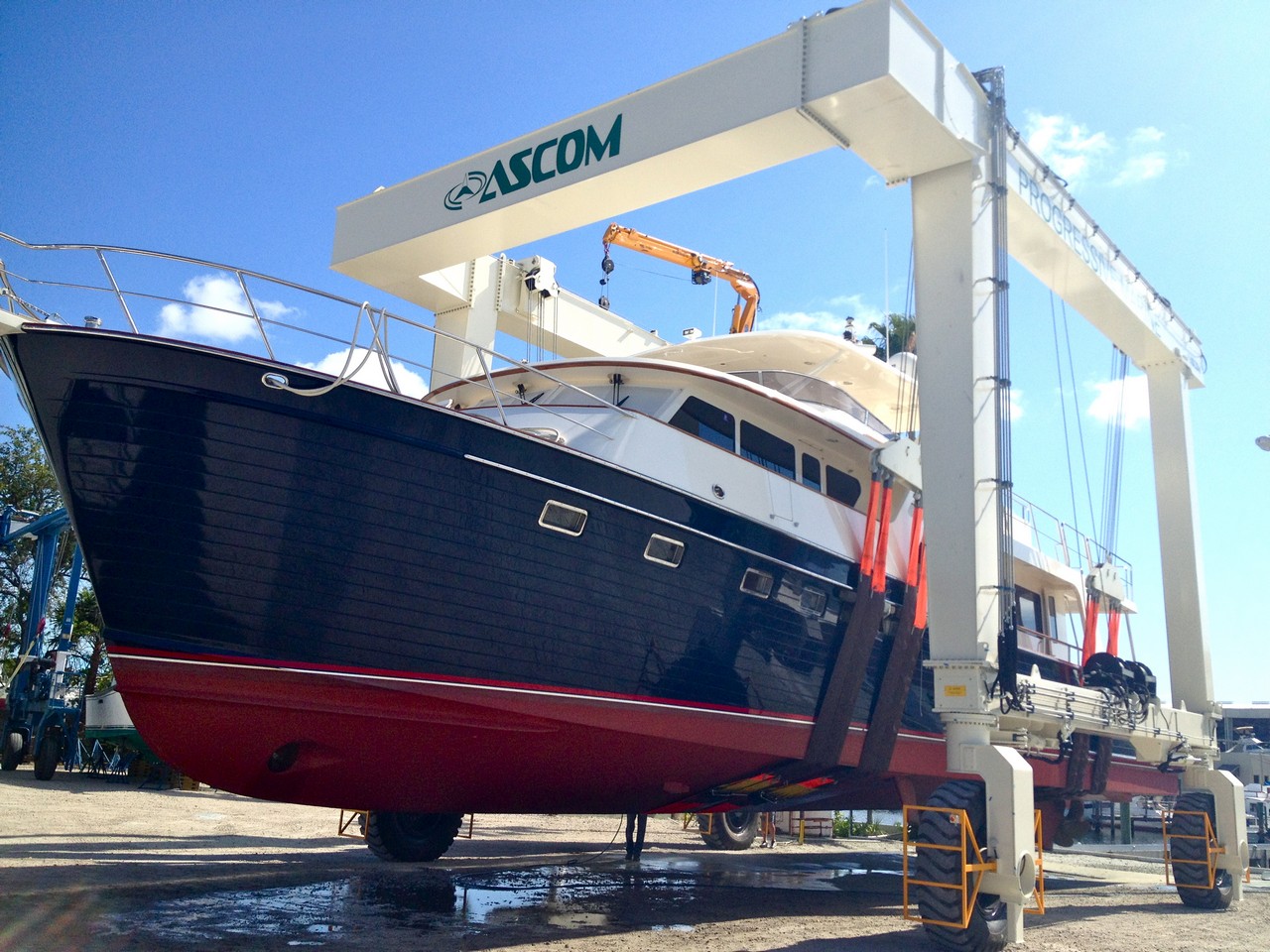
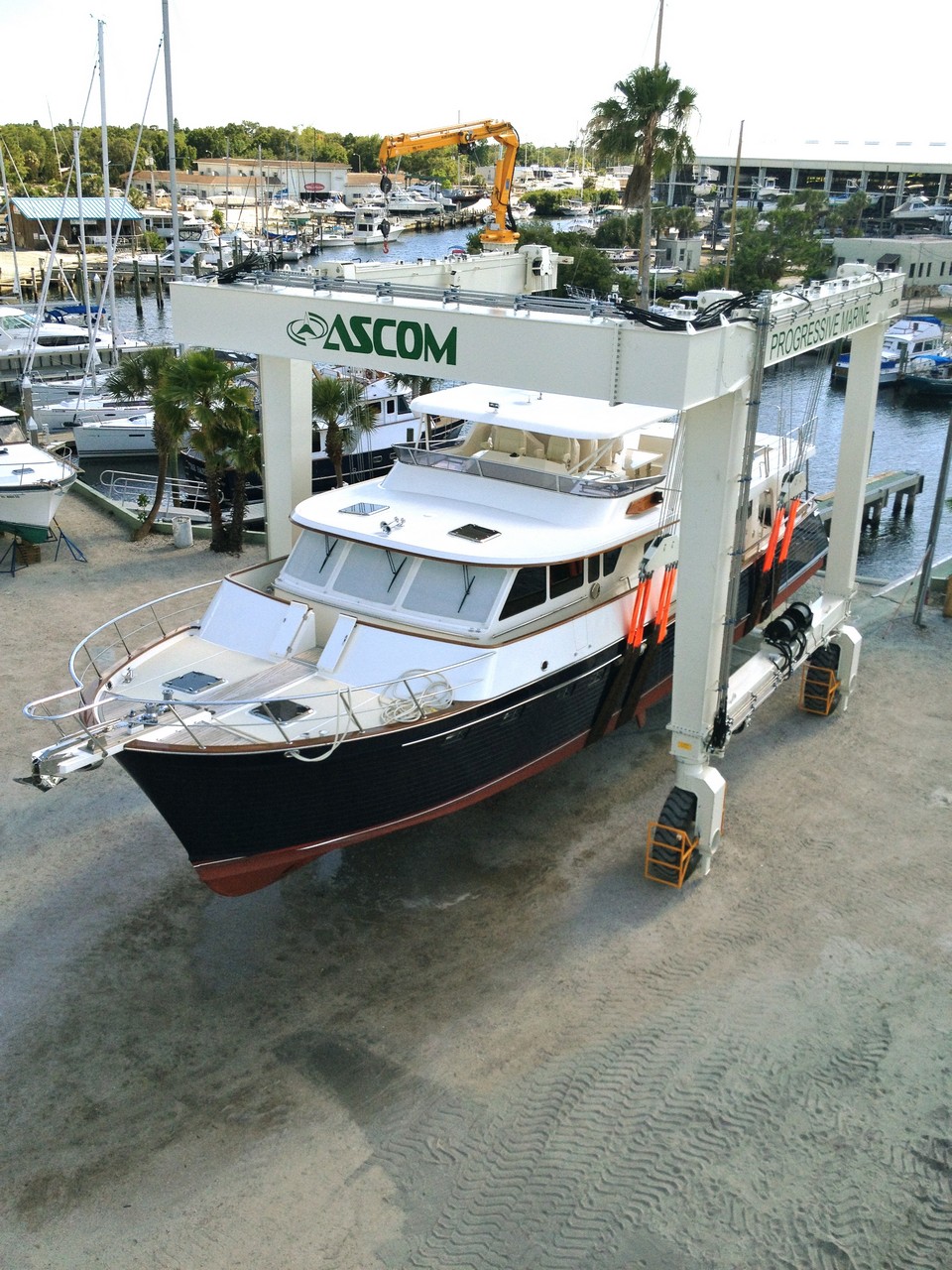
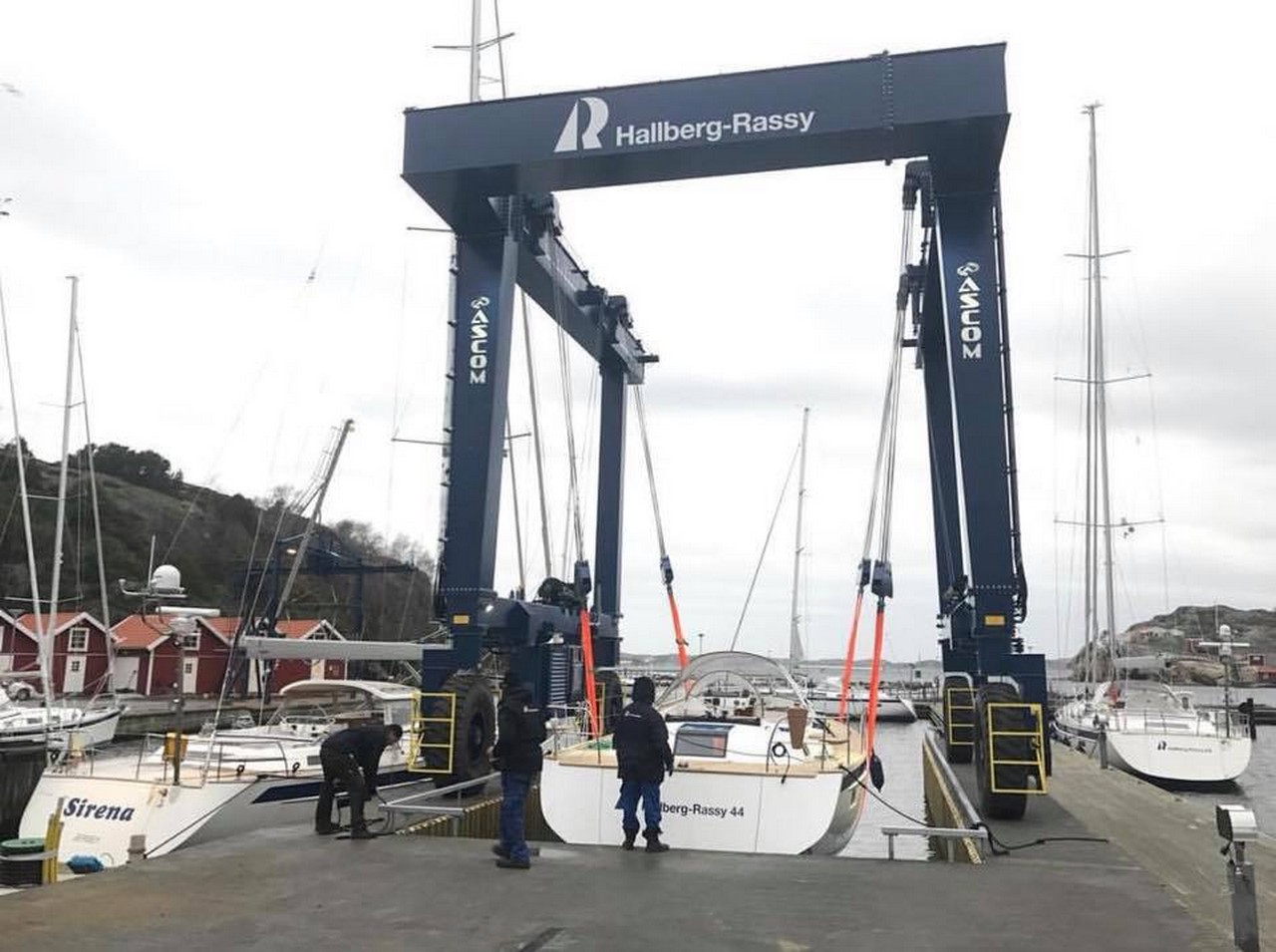


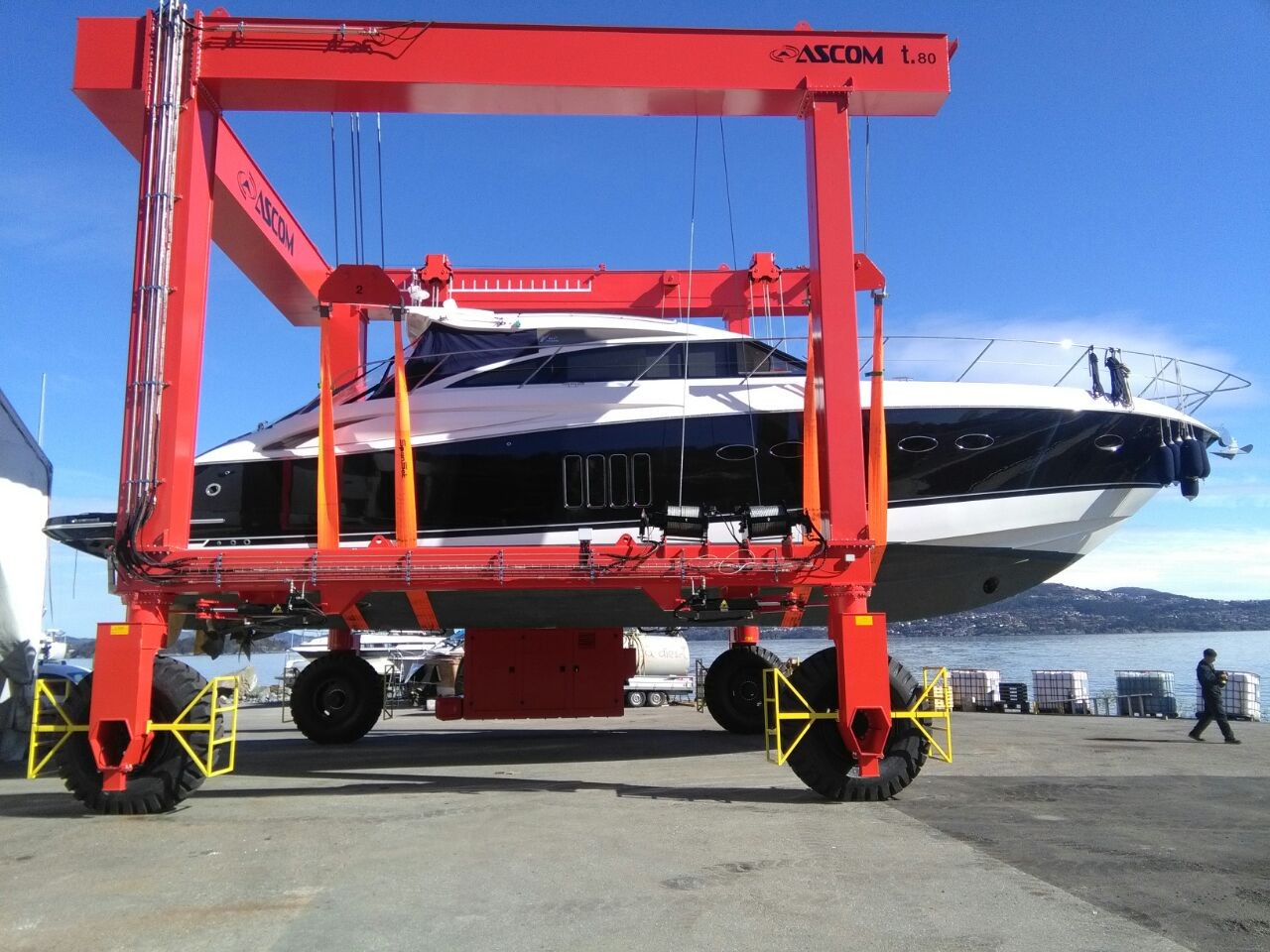
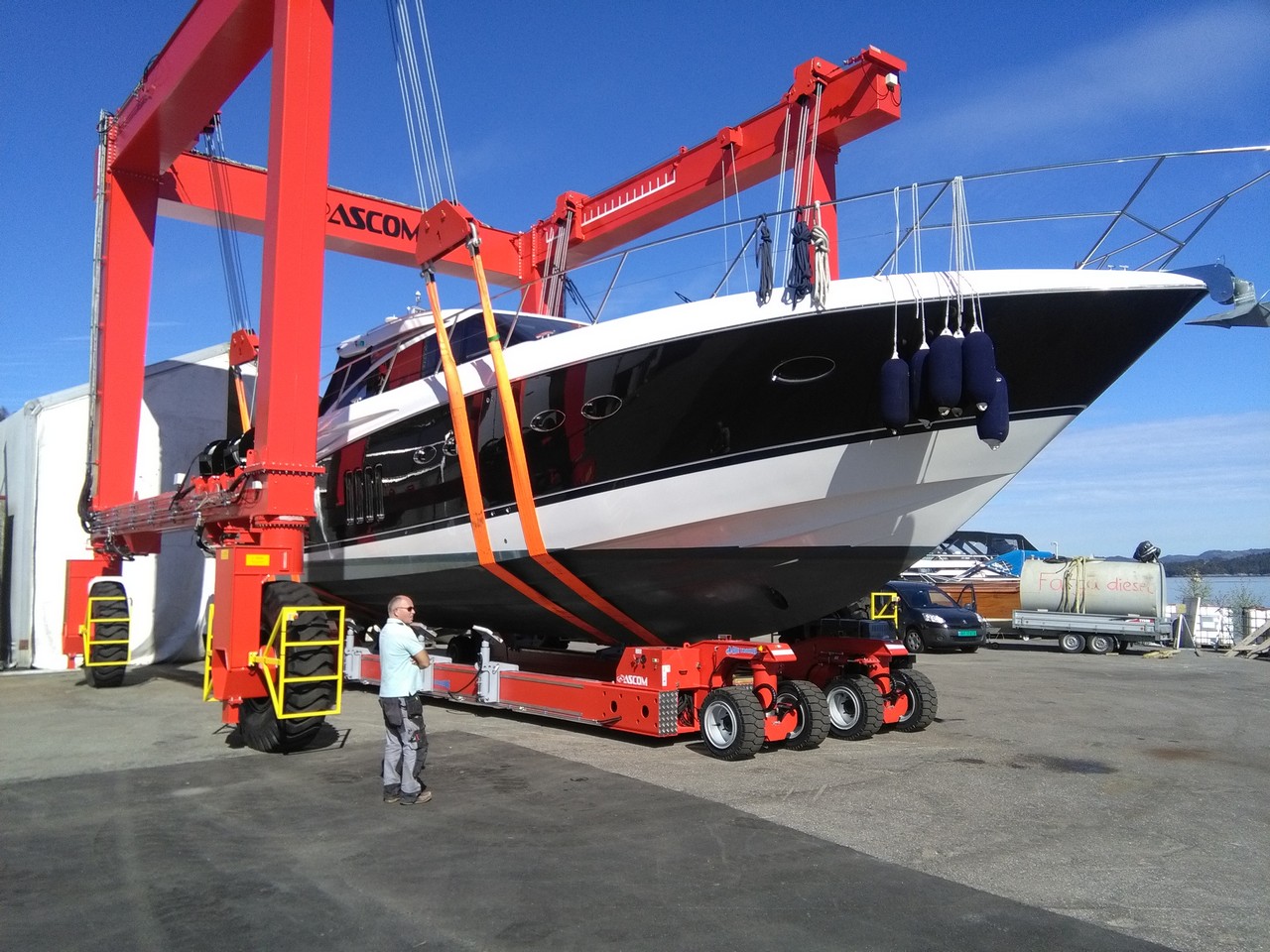
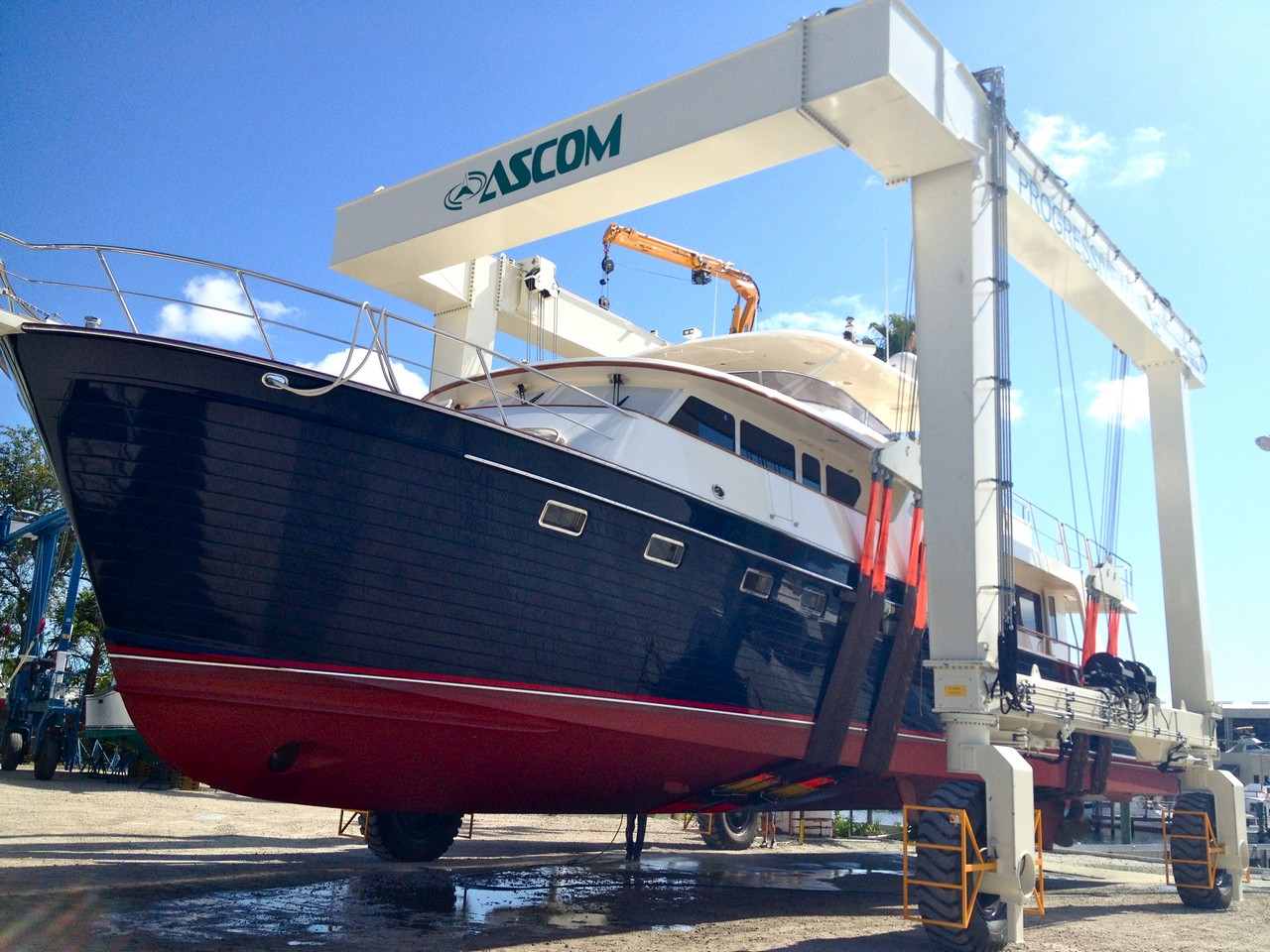

Email
Phone number
Connection will be made via internet - no charges apply. Microphone access required.
Leasing/Insurance
Adding to Favorites
Your comment:

